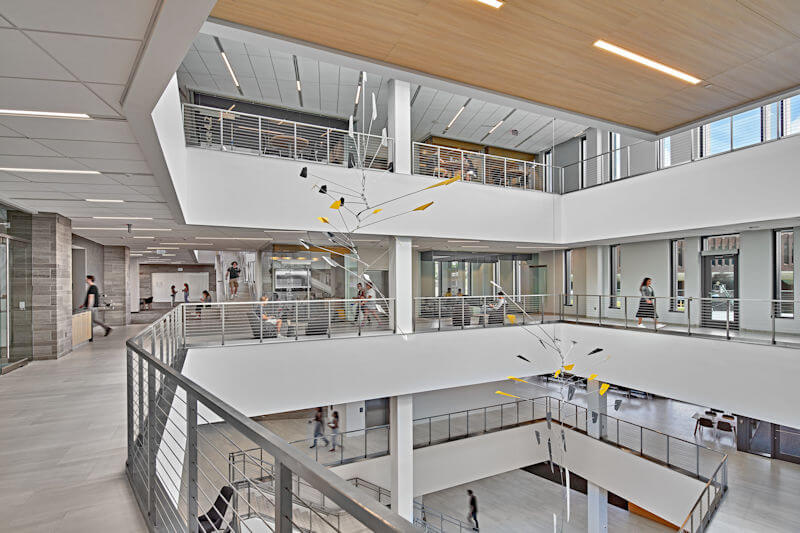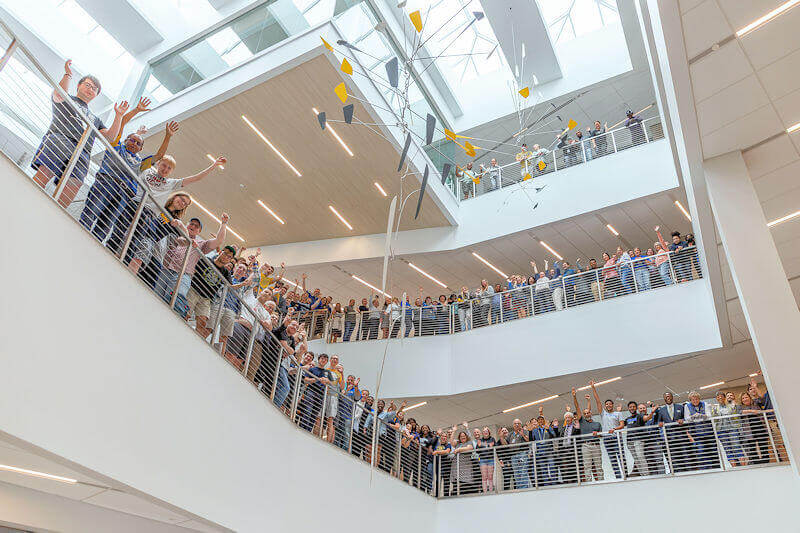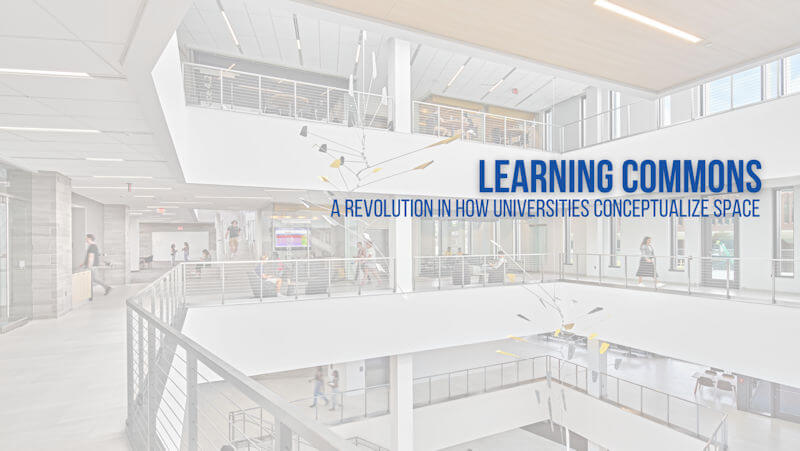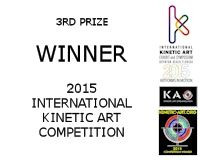Custom-Designed Mobile Sculpture for Atrium at Learning Commons at Kettering University
I’ve had the privilege to custom-design and make a two-part mobile sculpture for the atrium at the Learning Commons at Kettering University, a highly innovative state-of-the-art 105,000 square-foot architectural masterpiece designed by Travis Sage and the design team at Stantec, and in collaboration with President Robert K. McMahan and university staff.
The sculpture consists of two parts that visually correspond with each other and complete each other. Each part measures 25 feet (8 meters) in height and 16 feet (5 meters) in diameter. Made of aluminum to keep the sculpture lightweight and therefor susceptible to air movements within the space, the lower part weighs only 47 pounds (22 kg), the upper part only 39 pounds (18 kg).
The custom design of the two-part mobile sculpture, an application of a new approach to expanding Alexander Calder’s art form of mobiles:
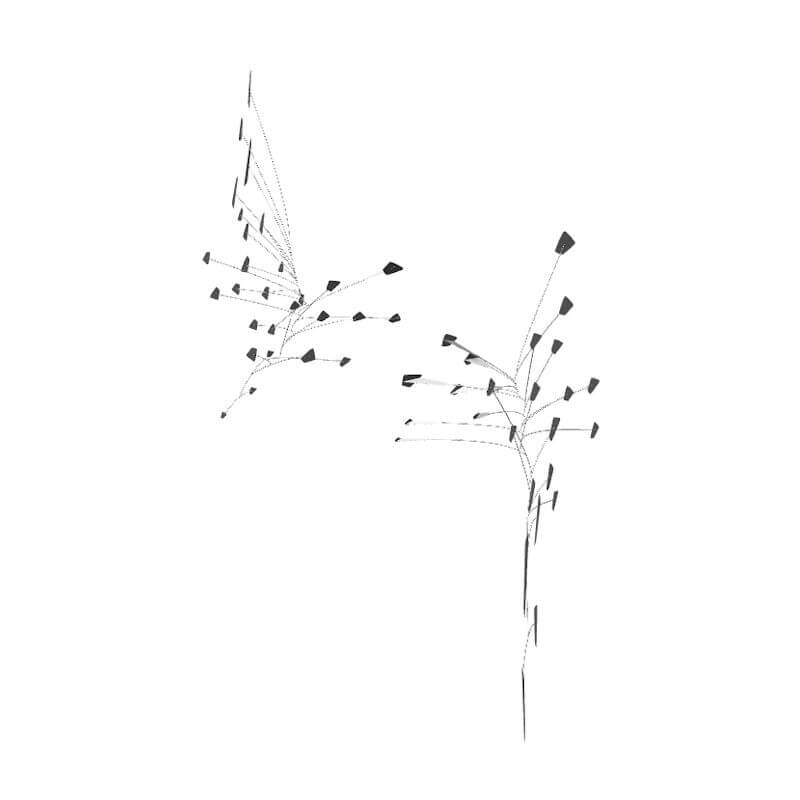
Shown within the 4-story atrium:

View from the ground floor:

Render of the building:
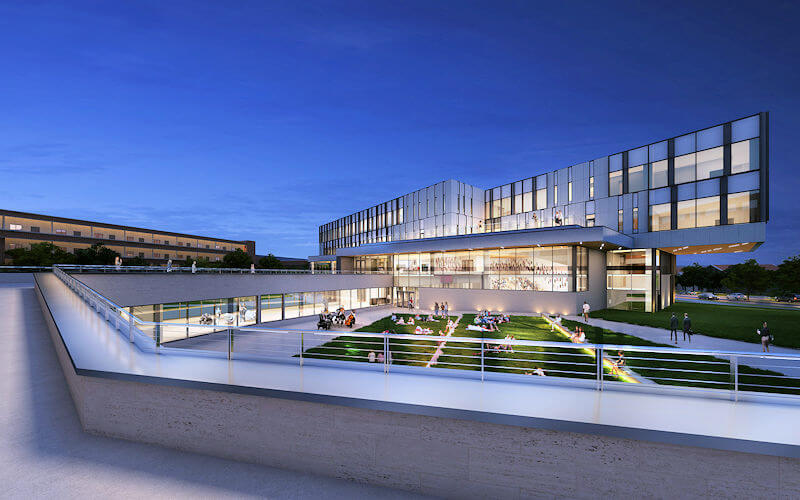
The atrium:
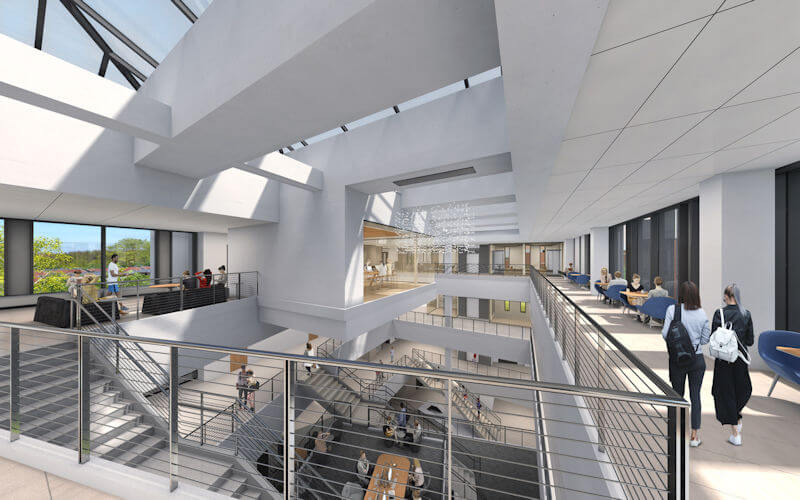

Several weeks were spent on experimenting with fabrication techniques and inventing custom tools. Several jigs to facilitate the assembly process were also made. The balance point of each of the almost 50 parts had to be calculated precisely within the 3d model. The balance point of each part is dependent on the weight of the other parts. Each part had to be fabricated according to the 3d model, with some parts needing many adjustments until they positioned themselves correctly. In the process, the sculpture had to be raised and lowered hundreds of times, making additional adjustments to the parts each time.
The sculpture is made with a conventional hook-and-loop structure, as in a Calder mobile. A custom-made bending tool bolted to a table weighing 2 tons was utilized to allow for the metal rounds as thick as 3/4 inch (2 cm) to be bent into tight loops with an inner diameter of only 1 inch (2.5 cm):

Calculated measurement marks lining up perfectly after a loop was bent, ensuring that the balance point will be precisely in the correct place:
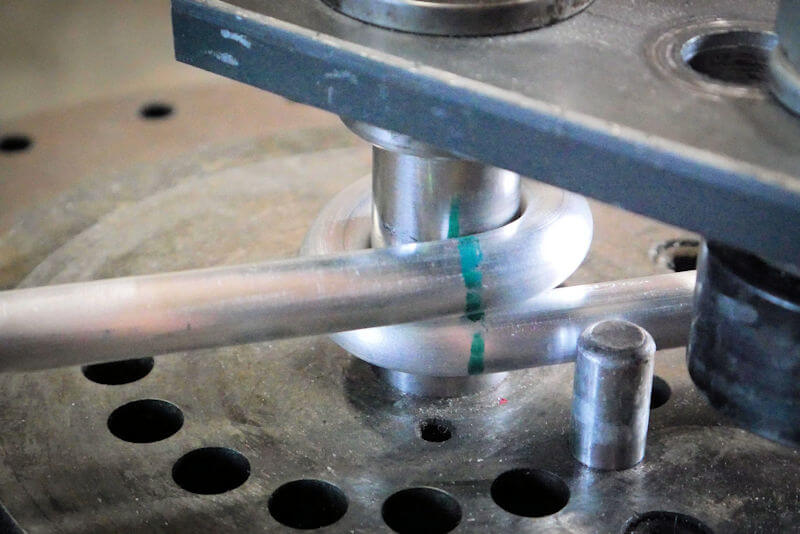
The 3d model of the atrium with the space utilized by the mobile (in red) to ensure that as the kinetic sculpture rotates and moves with the air currents, it will always remain out of reach from the various floors:

A video illustrating the various suspension options for mobile sculptures in the atrium:
Abstract metal shapes in the fabrication process:
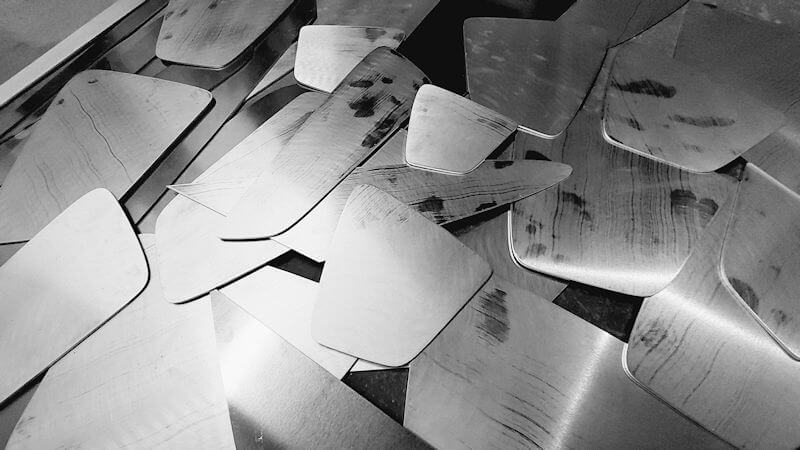
The spreadsheet for one of the two sections, comparing the weight of the parts in the 3D-model to the actual weight of the parts as they were being made. The difference throughout the fabrication process had to be kept to a minimum to ensure that each part of the almost 50 parts, and the sculpture as a whole, would balance correctly. In the end, the weight difference between the model and reality was only 0.05% (0.31 ounces / 8.73 grams) of the total weight of the section:
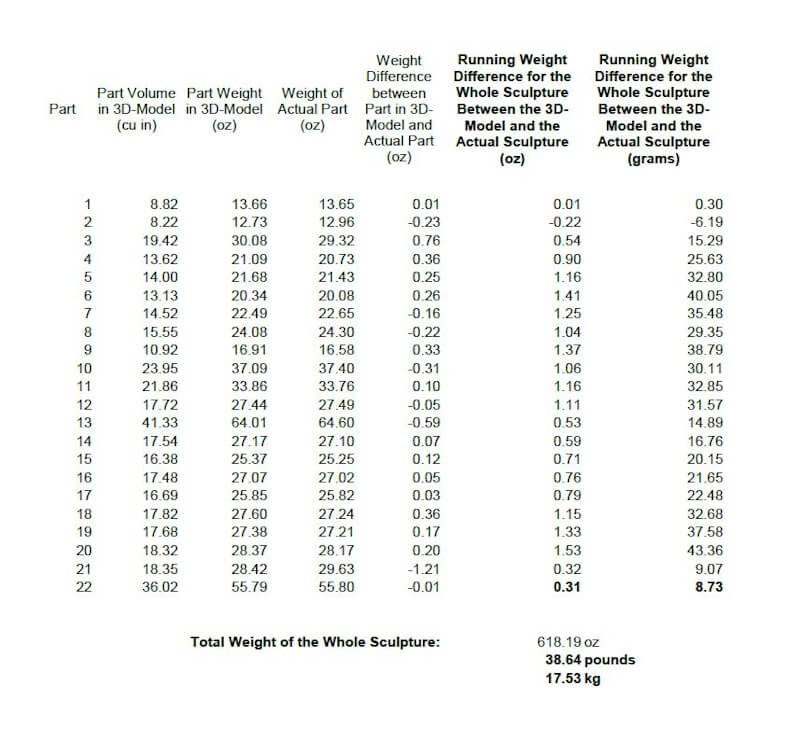
Photo from installation day:
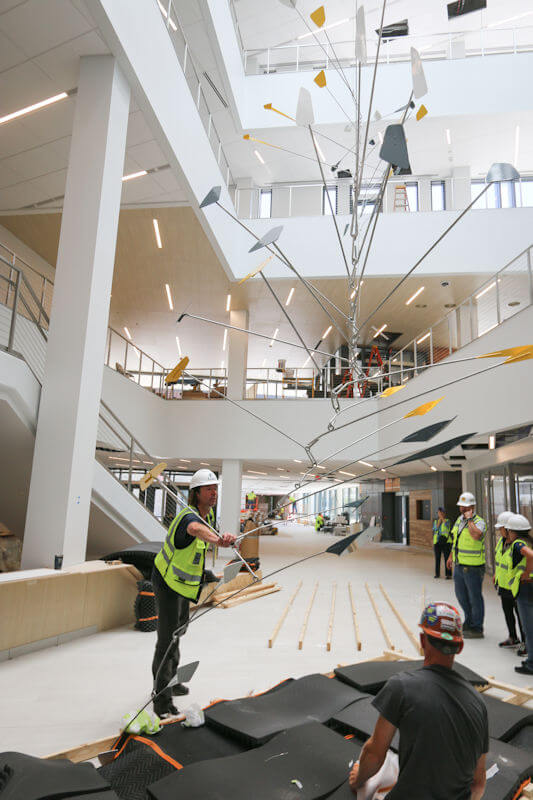
Photo from the opening ceremony in September 2022:
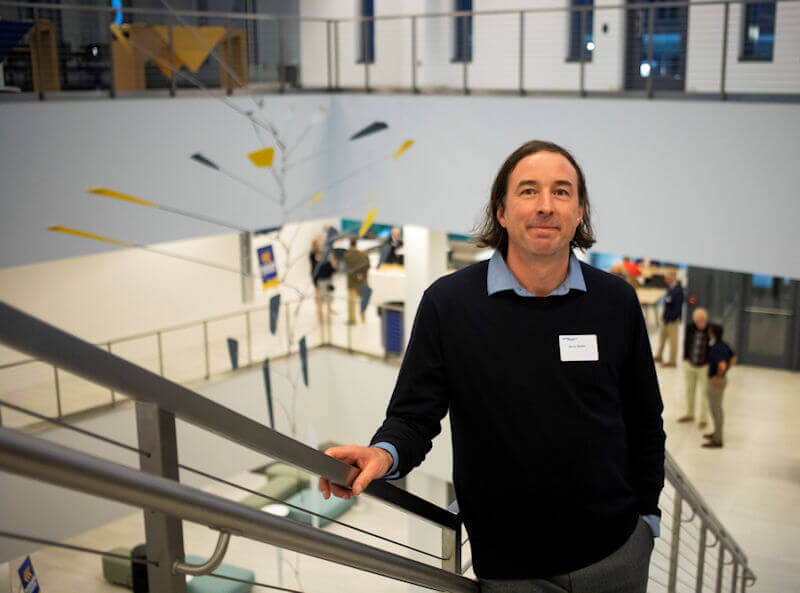
Thanks to Mike Rainer of Mike’s Machine & Welding for providing outstanding assistance with the fabrication of the mobile sculpture.
Update October 2023: The Learning Commons earns the Grand Prize at “Learning By Design” magazine’s Fall 2023 Architecture and Interior Design Awards of Excellence program.
I will be adding more images and information to this post as soon as I have time.
– See more of my art installations and mobile sculptures –

